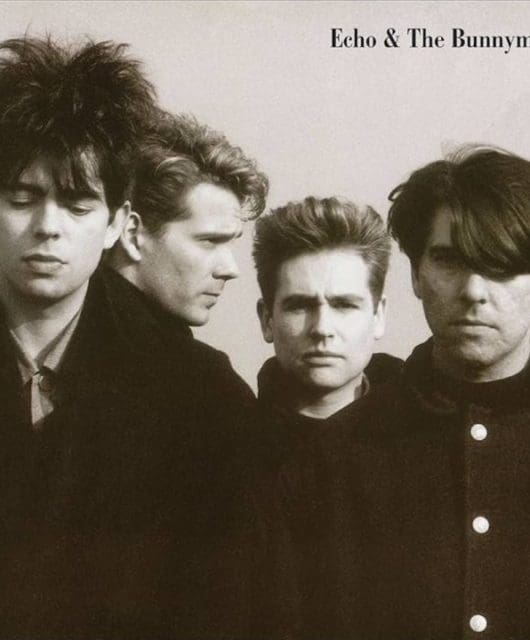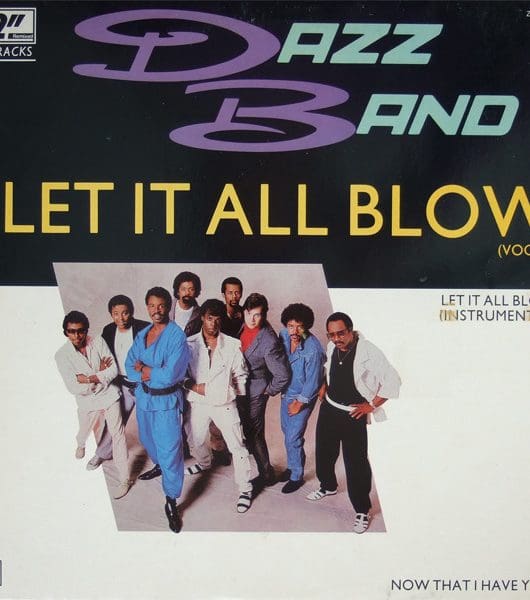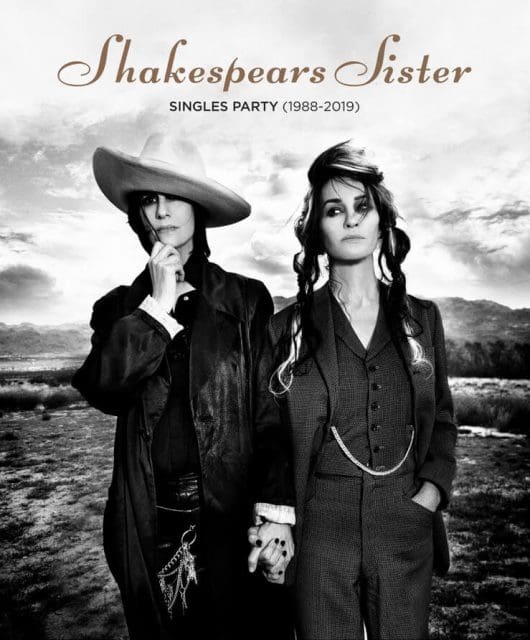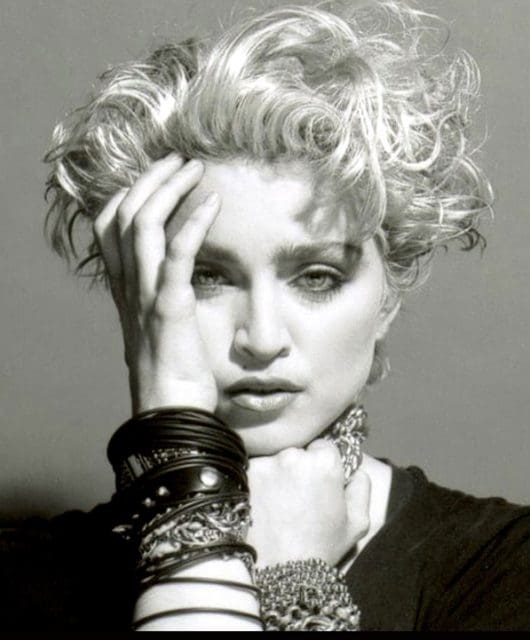Top 20 double A-side singles
By Classic Pop | January 26, 2023
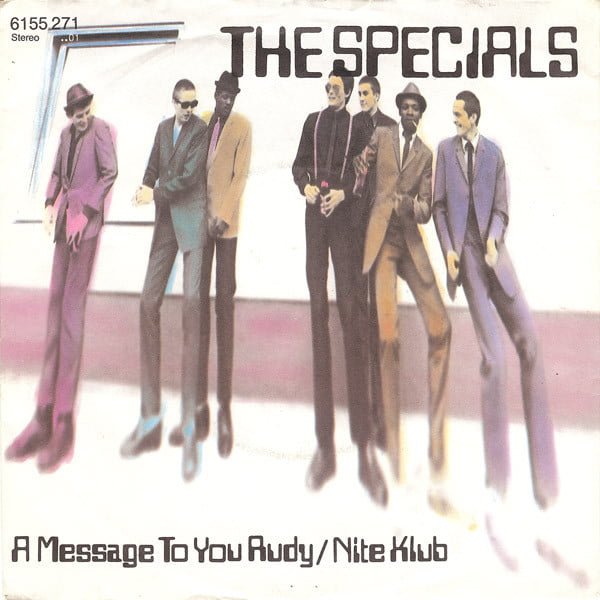
Since the dawn of pop and rock, the double A-sided single has provided great value for both record buyers and radio DJs… By Barry Page
Double A-sided 7” singles were initially more commonplace in the United States, where Elvis Presley is credited with racking up the most two-sided hits.
But, across the Atlantic, it was The Beatles who undoubtedly popularised the format in the UK, releasing a number of classic dual singles in the 60s, including Strawberry Fields Forever/Penny Lane.
With a rule here of only one double A-side per artist, we’re focusing on the period 1979 to 1993, when sales of the 7” were still thriving, long before the format sadly died out amid today’s digital age of streaming and downloads.
20. BLUR – SHE’S SO HIGH/I KNOW (1990)
Working on tracks for their debut single at Battery Studios in June 1990, the future Britpop favourites were unable to decide which song to go with for the A-side. Caught between the shoegazing psychedelia of the dreamy She’s So High and the funk-rock contrivances of I Know, Blur compromised by including both tracks on a dual 7”, which was controversially housed in a risqué pop art sleeve. NME named it their single of the week, but it narrowly missed the Top 40. Both songs were performed during the band’s Singles Night Tour in December 1999.
19. ASSOCIATES – 18 CARAT LOVE AFFAIR/LOVE HANGOVER (1982)
With back-to-back hits, Party Fears Two and Club Country, it seemed Associates had finally transitioned from post-punk outsiders to bona fide pop stars. But frontman Billy Mackenzie was already tiring of life in the spotlight. A new single papered over the cracks, pairing a fresh, vocal-enhanced version of instrumental Nothinginsomethingparticular with a cover of Diana Ross’ US No.1, Love Hangover, but Billy was about to announce his retirement from touring, leading guitarist Alan Rankine to quit the band.
18. KEVIN ROWLAND & DEXYS MIDNIGHT RUNNERS – LET’S GET THIS STRAIGHT (FROM THE START)/OLD (1982)
Featuring an ever-changing line-up, Dexys enjoyed a string of hits in the early 80s, including two chart-toppers with Geno and Come On Eileen. At their peak, this standalone single was cut during a further period of upheaval, although its tried-and-tested blend of soul and Celtic folk-flavoured pop showed little had changed sonically. On the reverse was an update of Old, with a new vocal from Kevin Rowland, evidence he was already unhappy with their Too-Rye-Ay album.
17. ANNIE LENNOX – LITTLE BIRD/LOVE SONG FOR A VAMPIRE (1993)
Coinciding with Lennox’s double award-winning appearance (via video link) at the Brits in 1993, synth-pop single Little Bird added mileage to the former Eurythmics singer’s year-old Diva album, but the addition of Love Song For A Vampire made this essential for fans who felt short-changed. Although written for Francis Ford Coppola’s hit movie Bram Stoker’s Dracula, the inspiration actually came from Anne Rice’s Interview With The Vampire novel, which offered a more romanticised take on vampire mythology.
16. THE BEAT – TEARS OF A CLOWN/RANKING FULL STOP (1979)
Impressed after seeing them in concert, Jerry Dammers invited The Beat to cut this one-off single for his 2 Tone label. The Birmingham band originally wanted Mirror In The Bathroom on the record, until Dammers advised them his backers at Chrysalis Records wouldn’t allow it on their debut album. Instead, they laid down their version of Tears Of A Clown, a transatlantic chart-topper for Smokey Robinson & The Miracles in 1970. John Peel, an early champion of the band, regularly played both sides on his radio show.
15 – RUN-DMC – MY ADIDAS/PETER PIPER (1986)
The perfect intro to Run-DMC’s innovative wordplay, this dual single arrived shortly before the hip-hop legends’ success with Walk This Way. Utilising a cowbell sound from jazz musician Bob James’ much-sampled version of Take Me To The Mardi Gras, Peter Piper cleverly integrated popular nursery rhymes and fables. My Adidas, meanwhile, had been inspired by a local doctor who’d ridiculously suggested that youths wearing branded clothing and footwear were more likely to commit crime. It led to a lucrative endorsement deal with the German sportswear giant.
14. SUEDE – THE DROWNERS/TO THE BIRDS (1992)
Suede’s opening salvo arrived on a wave of hype; it was the beginning of Britpop and they’d just been declared ‘the best new band in Britain’ by Melody Maker. Penned during a fruitful period for the fledgling partnership of Brett Anderson and Bernard Butler, The Drowners certainly caught the ear with its gnarly fretwork and irresistible refrain of “you’re taking me over”. However, the more reflective To The Birds was worthy of its equal billing, and Anderson would later bemoan its absence on the band’s Mercury Music Prize-winning debut album.
13. THE SPECIALS – A MESSAGE TO YOU RUDY/NITE KLUB (1979)
After hit debut single Gangsters, ska revivalists and political commentators The Specials hired Elvis Costello to produce their debut album, which birthed this classic dual single. In an era of rising unemployment, Nite Klub spoke of a generation squandering their dole packets, but it was a cover of Dandy Livingstone’s 1967 single, Rudy A Message To You, that resonated, its original address to the so-called ‘rude boys’ of Jamaica to straighten out and think of their future just as relevant to the disaffected youth of Thatcher’s Britain.
12. SCRITTI POLITTI – ASYLUMS IN JERUSALEM/JACQUES DERRIDA (1982)
Fronted by Green Gartside, Scritti Politti had adopted punk’s DIY ethos, releasing their first, self-financed single in 1978. Rough Trade put out the pompously-titled Songs To Remember album, plus a string of John Peel-endorsed singles, whose artwork appropriated luxury brands such as Dunhill and Courvoisier. Weaving in soul and Jamaican pop, this first double-A exemplified Gartside’s interest in the philosophies of Nietzsche and Derrida. It just missed the Top 40, but success was around the corner.
11. UB40 – KING/FOOD FOR THOUGHT (1980)
Formed during an era of proliferating mass unemployment, the appropriately-named UB40 received their first break when Chrissie Hynde invited them to support the chart-topping Pretenders on tour in 1980. This coincided with the release of UB40’s powerful debut 7”, the first in a series of dual singles to hit the UK Top 20. The meditative King paid tribute to civil rights campaigner Martin Luther King Jr, while Food For Thought – originally conceived as a Christmas song by guitarist Robin Campbell – brought African famine to public attention years before Band Aid.
10. NEW ORDER – PROCESSION/EVERYTHING’S GONE GREEN (1981)
Recorded virtually in tandem with debut album Movement, this standalone single signalled a sonic sea change for a band still transitioning in the wake of Ian Curtis’s death. With one foot in the past, Bernard Sumner played the late singer’s Vox Phantom guitar during the recording of Everything’s Gone Green, but the electronic drums and Giorgio Moroder-inspired synth arpeggios heralded an exciting new era. It was also the last track to feature maverick producer Martin Hannett, who reportedly stormed out during the session.
9. PET SHOP BOYS – WHERE THE STREETS HAVE NO NAME (I CAN’T TAKE MY EYES OFF YOU)/HOW CAN YOU EXPECT TO BE TAKEN SERIOUSLY? (1991)
Desperate for a major hit following the relatively poor placing of Being Boring, PSB pulled out all the stops with this double bill. Remixed by Brothers In Rhythm, HCYETBTS? took a wry swipe at musicians partaking in humanitarian causes, while an inspired medley, originally for Patsy Kensit, combined Hi-NRG versions of U2’s Where The Streets Have No Name and Frankie Valli’s Can’t Take My Eyes Off You. Neil and Chris had their hit.
8. ABBA – ANGELEYES/VOULEZ-VOUS (1979)
Struggling with writer’s block during the making of their sixth album, Voulez-Vous, Benny Andersson and Björn Ulvaeus jetted out to the Bahamas for a songwriting sojourn. Immersing themselves in sunshine and daytime radio, they emerged with Kisses Of Fire, plus the risqué, disco-infused title track, which they started working on in a Miami studio. The third single to be lifted from the album, it was paired with the sumptuous Angeleyes, a Motown-flavoured track written in an unusual key. “It’s somehow both too low and too high,” commented Andersson.
7. THE JAM – GOING UNDERGROUND/DREAMS OF CHILDREN (1980)
Cementing their status as Britain’s most popular band, The Jam headed to the top of the charts in March 1980. Recorded in the early throes of Thatcher’s premiership, Going Underground confirmed Paul Weller was firmly attuned to the politics of the day, with its reference to a simmering nuclear threat following Russia’s invasion of Afghanistan in 1979. Meanwhile, Dreams Of Children was a psychedelic piece that employed backwards loops with chilling lyrics that were reportedly influenced by horror writer Clive Barker.
6. PRINCE AND THE REVOLUTION – LET’S GO CRAZY/TAKE ME WITH U (1985)
Capitalising on Prince’s worldwide success with the Purple Rain movie and soundtrack in 1984, Warners released a brace of dual singles. Following the acclaimed pairing of 1999 and Little Red Corvette, they unleashed US No.1 Let’s Go Crazy, which included the singer’s sermonising intro and a frenzy of screaming guitars. Elsewhere, Take Me With U, characterised by Lisa Coleman’s enchanting string arrangement, had originally been intended for Prince protégées Apollonia 6, before being included in the Purple Rain movie at the director’s behest.
5. DEPECHE MODE – BLASPHEMOUS RUMOURS/SOMEBODY (1984)
No strangers to controversy, Depeche Mode upset the religious community with Blasphemous Rumours, whose teenage protagonist finds Jesus after a failed suicide attempt, before perishing in a car accident. With unsettling effects and a foreboding percussive metal hammer, this was pretty heavy for daytime radio – some DJs, nervous about playing a song with “God’s got a sick sense of humour” in the chirpy chorus, plumped for flipside Somebody, a piano-led ballad with Martin Gore on lead vocals.
4. THE STONE ROSES – WHAT THE WORLD IS WAITING FOR/FOOLS GOLD (1989)
Boasting a title befitting of The Stone Roses’ hubris, standalone single What The World Is Waiting For arrived in a year when momentum had been building since the release of their debut LP. It was standard jangly fare, but most were tuned to its alternate side, Fools Gold, whose mesmerising drum loop had been sourced from an album of breakbeats. Originally conceived as an experimental B-side, it soon received equal billing, and its iconic status was consolidated with an appearance on Top Of The Pops.
3. SOFT CELL – TAINTED LOVE/WHERE DID OUR LOVE GO? (1981)
Something of a Northern Soul club staple in the 70s, obscure B-side Tainted Love had originally been released by soul singer Gloria Jones in 1965 (and then again in 1976 with doomed beau Marc Bolan at the helm), but it was Soft Cell’s masterful synth-pop version which would garner the greatest success. For the innovative 12” version, the duo interpolated their take on The Supremes’ Where Did Our Love Go?, also including it on the 7” – a decision they’d regret as they missed out on lucrative publishing royalties.
2. WHAM! – LAST CHRISTMAS/EVERYTHING SHE WANTS (1984)
Wham!’s perennial Last Christmas had been demoed by George Michael following a burst of inspiration at his parents’ home, and was scheduled to go up against Frankie Goes To Hollywood for the Christmas No.1 in 1984, before Band Aid swooped in at the last minute. Equally brilliant was its flip, Everything She Wants, which told the story of a man in an unhappy marriage. Michael played all the instruments, demonstrating his development as a musician was commensurate to his growing maturity as a songwriter.
And No.1 in our list of double A-side singles is…
KRAFTWERK – COMPUTER LOVE/THE MODEL (1981)
Düsseldorf’s finest reached their artistic and commercial peak with Computer World, an eerily-prescient futurist concept album that would prove to be highly influential, particularly in the hip-hop community. It yielded a minor hit in Pocket Calculator in the spring of 1981, but its modest success would soon be eclipsed by follow-up Computer Love, which appeared to pre-empt the recent phenomenon of online dating.
It was initially another minor hit, but picked up traction when savvy DJs began playing its far more glamorous B-side, The Model. Proving just how ahead of the musical curve Kraftwerk were, the track had originally appeared on their 1978 album, The Man-Machine, but with electronic music now an increasingly prevalent force in the charts, it now didn’t sound out of place, particularly amongst the Blitz Kids and New Romantic cognoscenti.
It was eventually rebranded as a double A-side and reached the chart summit the following February. Unmoved by the news, the enigmatic electropop pioneers failed to capitalise on its success, and spent the rest of the decade obsessing over the fast-developing new technologies of the era, rising above their Kling Klang parapet for just one more classic single, Tour De France, and the disappointing Electric Café album.
- Want more from Classic Pop magazine? Get a free digital issue when you sign up to our newsletter!


